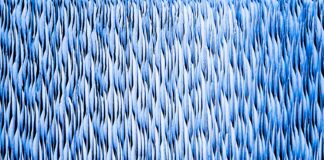VQGAN, or Vector Quantized Variational Autoencoder with Generative Adversarial Networks, represents a cutting-edge advancement in the field of artificial intelligence and generative modeling. This innovative approach combines elements of variational autoencoders (VAEs) and generative adversarial networks (GANs) to create high-quality and diverse images with remarkable realism and detail. VQGAN builds upon the success of previous models by incorporating vector quantization, a technique that enables the efficient representation and synthesis of complex data distributions. With its ability to generate photorealistic images from textual descriptions or latent vectors, VQGAN has garnered widespread attention and acclaim within the machine learning community for its impressive results and versatility.
The architecture of VQGAN consists of two main components: the encoder and the generator. The encoder takes an input image and maps it to a lower-dimensional latent space representation, capturing the essential features and characteristics of the image. This latent representation is then passed through a vector quantization layer, where it is discretized into a set of discrete codes or tokens. These tokens are then fed into the generator, which uses them to reconstruct the original image or generate new images with similar characteristics. By incorporating vector quantization into the training process, VQGAN learns to generate images that faithfully capture the visual semantics of the input data while maintaining diversity and realism.
Furthermore, VQGAN leverages the power of generative adversarial networks (GANs) to enhance the quality and diversity of the generated images. GANs consist of two neural networks: a generator and a discriminator, which are trained simultaneously in a competitive manner. The generator generates images from random noise or latent vectors, while the discriminator evaluates the realism of the generated images and provides feedback to the generator. Through this adversarial training process, the generator learns to produce images that are indistinguishable from real images, while the discriminator learns to differentiate between real and generated images. By combining VQGAN with GANs, researchers have achieved significant improvements in image quality, diversity, and realism, making it a powerful tool for image synthesis and generation.
Moreover, VQGAN offers a range of advanced features and capabilities that make it well-suited for a variety of applications in computer vision, creative arts, and entertainment. One notable feature is its ability to generate high-resolution images with fine-grained details and textures, thanks to the vector quantization layer and the adversarial training process. This makes VQGAN particularly well-suited for tasks such as image super-resolution, style transfer, and image inpainting, where high-quality and realistic results are essential. Additionally, VQGAN supports conditional image generation, allowing users to control the attributes and characteristics of the generated images through conditional inputs such as text descriptions or semantic labels. This enables a wide range of creative possibilities, from generating images based on specific concepts or themes to manipulating the appearance of existing images in meaningful ways.
Furthermore, VQGAN has been widely adopted and extended by researchers and enthusiasts worldwide, leading to numerous advancements and innovations in the field of generative modeling. Researchers have developed various techniques and algorithms to further enhance the capabilities of VQGAN and push the boundaries of what is possible in image synthesis and generation. These include improvements in training algorithms, architectural modifications, and novel applications of VQGAN in areas such as image translation, image editing, and interactive image generation. By fostering an open and collaborative research community, VQGAN continues to evolve and improve, paving the way for exciting new developments in artificial intelligence and creative expression.
VQGAN represents a significant breakthrough in the field of generative modeling, offering a powerful and versatile framework for image synthesis and generation. By combining the strengths of vector quantization, variational autoencoders, and generative adversarial networks, VQGAN achieves remarkable results in generating high-quality and diverse images with realism and detail. With its advanced features, capabilities, and widespread adoption by researchers and enthusiasts, VQGAN is poised to drive further advancements in computer vision, creative arts, and entertainment, unlocking new possibilities for artificial intelligence and human creativity.
VQGAN has gained widespread attention and adoption within the machine learning and creative communities for its impressive capabilities and potential applications. Its ability to generate high-quality images from textual descriptions or latent vectors has sparked interest in various fields, including computer vision, graphic design, and digital art. Artists and designers are exploring VQGAN as a tool for generating novel and visually striking imagery, leveraging its flexibility and realism to create captivating visuals for various projects and applications. Moreover, researchers are investigating VQGAN’s potential for tasks such as data augmentation, image synthesis, and content generation, seeking to harness its capabilities to address real-world challenges and drive innovation in artificial intelligence.
Furthermore, VQGAN’s impact extends beyond just image generation, with potential applications in fields such as medicine, engineering, and entertainment. In the medical field, VQGAN could be used to generate realistic medical images for training and education purposes, allowing medical professionals to practice and refine their skills in a realistic virtual environment. In engineering, VQGAN could aid in the design and visualization of complex structures and systems, enabling engineers to explore and evaluate design concepts more efficiently. In entertainment, VQGAN could be used to create immersive virtual worlds, characters, and environments for video games, movies, and virtual reality experiences, enhancing the overall user experience and storytelling capabilities.
Moreover, VQGAN’s versatility and adaptability make it suitable for a wide range of applications and industries, from advertising and marketing to scientific research and education. Marketers and advertisers can leverage VQGAN to create eye-catching visuals and advertisements that resonate with their target audience, driving engagement and brand awareness. Scientists and researchers can use VQGAN to generate realistic simulations and visualizations of complex phenomena, aiding in data analysis, hypothesis testing, and scientific communication. Educators can incorporate VQGAN into their curriculum to engage students in hands-on learning activities and foster creativity and critical thinking skills.
Additionally, VQGAN has the potential to revolutionize the way we interact with and perceive digital content, opening up new possibilities for creative expression and artistic exploration. Artists and designers can use VQGAN to push the boundaries of traditional art forms, creating innovative and immersive experiences that blur the line between reality and imagination. With its ability to generate photorealistic images with remarkable detail and realism, VQGAN offers a powerful tool for artists to express their creativity and vision in new and exciting ways. Whether it’s creating concept art for films and video games, designing virtual environments for immersive experiences, or producing digital artwork for exhibitions and galleries, VQGAN empowers artists to bring their ideas to life in unprecedented ways.
In conclusion, VQGAN represents a significant milestone in the field of generative modeling, offering a powerful and versatile framework for image synthesis and generation. With its advanced capabilities, widespread adoption, and potential applications across various industries and fields, VQGAN is poised to revolutionize the way we create, interact with, and perceive digital content. Whether it’s generating high-quality images for artistic, scientific, or commercial purposes, VQGAN offers a wealth of opportunities for innovation, creativity, and exploration, paving the way for exciting new developments in artificial intelligence and human expression.














